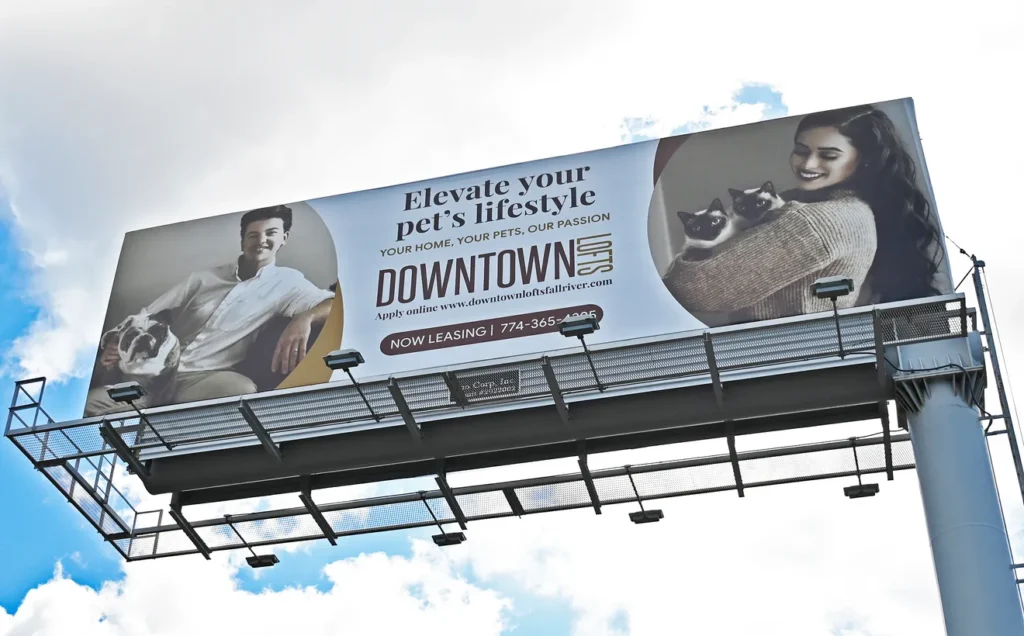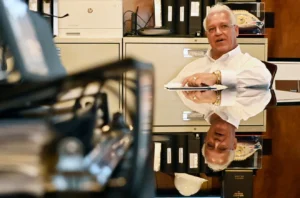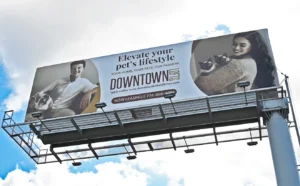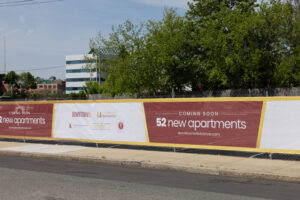“I think it’s a beautiful thing watching all these puppies walk around,” Anthony Cordeiro said. It’s not only because each pet is an extra surcharge — he said it creates a community among tenants, which he called his ultimate vision for Downtown Lofts.
“One person talks to someone in another building, and before you know it you’ve got that beautiful chemistry of multiple buildings with people and they’ll make friends across the way,” he said. “That’s kind of the idea.”
Developer has found a need in Fall River and filled it
On Sept. 15, the Cordeiro Group broke ground on 295 Bedford St. Within 14 or 15 months, what was once a used car lot and auto body shop will become a five-story building with 52 market-rate apartments and a senior center.
By the end of the month, they expect to close on the former Silvia School property on Hartwell Street. A fire of the long-vacant property led to demolition of one building, but the company will knock down the rest. In its place, another 52-unit building.
By February or March 2026, Cordeiro said, they’ll be setting the foundation for two buildings on Hartwell Street where another 102 units will stand.
“It’s all steel. No stick-built,” he said.
Already the Cordeiro Group is among the most successful real estate developers in the city, and its plans for the next four or five years mean even more growth.
Fall River’s population is increasing. This has butted against old housing stock and a drastically low 1.2% vacancy rate. As soon as the Cordeiros build apartments, they’re filled. So they’re making more.
Their growth plans have involved juggling immense sums in capital, and convincing lenders — and the state, and the city itself — that a historically poor Gateway City like Fall River is even worth investing in.
Its Bedford Street building was granted $2.5 million in a tax break through the Housing Development Incentive Program, a state initiative to spur the building of market-rate housing in Gateway Cities — the idea being that higher-end housing can revive blighted neighborhoods. Improved neighborhoods attract newcomers to the city, which stimulates more growth. But he said it’s contingent on everyone coming to the table to be part of a project and the growth it’s expected to generate years from now.
“The state won’t even look at you unless the city participates, and so the city needs to do some form of a tax break,” he said.
Though tax-increment financing deals for developers may be controversial for some, he said large-scale development simply cannot occur without them. To make the initial financing possible, the city allows a few years of reduced taxes, and “eventually they’ve got this building that’s just generating revenue — on [what was] a parking lot,” he said. “I always say, if you want to play, you’ve got to get to the table.”
Cordeiro said there are benefits down the line. “You bring in people living here, all of a sudden you’ll see that little bakery shop open up. You’ll see a hair salon open up,” he said. “Bring the market-rate people with disposable income … and then hopefully the commercial people start looking to invest in that area.”
The city is in the midst of a severe shortage of not just affordable housing, but any housing. Cordeiro said the housing crisis can be alleviated by producing much more supply to meet a soaring demand and encouraging other developers to build, too. He noted that his properties previously held no housing, and in some cases were long-vacant lots.
“I’m not displacing anybody,” Cordeiro said. “I’m not taking people out of their homes. I’m creating homes. … I’m bringing new people into the city to reinvig the city and commit.”
His current and future projects straddle Interstate 195. Cordeiro said he has a vision that mirrors downtown Boston, where drivers who emerge from the “Tip” O’Neill Tunnel wind up surrounded by “beautiful buildings.”
“Imagine coming from New Bedford, or … traveling from Providence,” he said, “you’ve got a tunnel with beautiful modern buildings, beautifully lit, well-maintained. You’ve got a Gateway City, a major entrance into your downtown. Imagine if you could dress that up?”
At Commonwealth Landing, having a building full of people with disposable income has been beneficial for the retail in that area: Troy City Yoga, Duke’s Bakery, Barrett’s Waterfront restaurant. Market-rate housing may have started to influence downtown, with local businesses catering to an upscale crowd seeing traffic from tenants within walking distance. Down the street from a garage Cordeiro owns on Sixth Street, Choco-Latte Café is successful, and its owner is opening a sauna and cold-plunge spa next door. The Fall River Museum of Contemporary Art sits alongside the Merrill Building. A block away from its Third Street buildings, Café Balboa, Bun Buds, the Towne House and HoneyBee Cafehave cropped up in recent years, offering fancy coffee drinks, quick lunches, upscale dining gourmet hot dogs and bao.
“I’ve been here almost 40 years. When I used to leave at night, it would be dark. All these buildings were old. Nobody was living in them,” Cordeiro said. “Now, when I leave, it’s dark but the lights are on. And people are walking their pets, and they’re having fun, and they’re spending time here in the city.”
Developer says there’s room for more market-rate growth
On the waterfront, where Commonwealth Landing was what Cordeiro called the catalyst to prove that market-rate mixed-use housing can work in Fall River, the Route 79-Davol Street Corridor project is almost ready to wrap up. By spring 2026, it will have opened 18 to 20 developable acres of land near the MBTA station — acreage that Cordeiro Group is watching closely. It’s envisioned to be a new walkable neighborhood.
“I’m excited to see how the city’s going to put that out for bid,” Cordeiro said. “The parcels will be ready for development, meaning you’re not cutting into streets, you’re not ripping down utilities. And I would love to play alongside of Commonwealth, because that’s something special to the city right there.”
But they’re not finished filling downtown with new tenants. On a tour of the neighborhood, Deniz Diogo and Melanie Cordeiro showed off how far ahead they’re thinking.
Cordeiro Group owns several plots of asphalt in the area, currently used for parking. Diogo, Cordeiro’s construction superintendent, said all those parking lots are buildable — and in some cases already prepped for utilities.
“We have all these corner lots that hopefully someday we’re going to utilize them for building. Because that’s the purpose of them,” Diogo said. “Still keep a parking level and build on top of that.”
Meanwhile, shovels are in the ground on Bedford Street where Cantin’s Clunkers once had its home, the result of what Cordeiro called six years of planning. It should be filled with new residents by the time it’s complete. It may be years before Cordeiro Group need to start building over its neighboring lots, but the demand is there.
“This city’s going to pop,” Anthony Cordeiro said.





